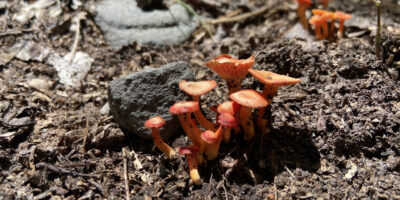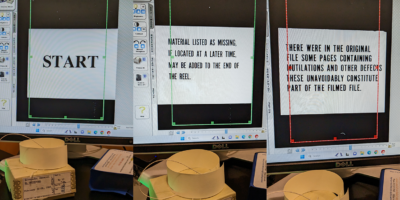By Sarah Litvin
This past Spring semester the Teaching and Learning Center offered several programs that translated museum education techniques into the college classroom to enliven pedagogical practice. This post will offer highlights from our work in this area through the Museum Pedagogy Focused Inquiry Group (FIG), including the launch of the new digital open educational resource created collaboratively by our group, Museum Pedagogy in the Classroom. This site offers varied points of access for those looking to incorporate creative pedagogies into their lesson, assignment or course design.
The Museum Pedagogy Focused Inquiry Group (FIG)
The members of our FIG, Angelique Aristando, Brendan Murphy, Elissa Myers, Katie Uva and myself (Sarah Litvin), are an interdisciplinary group of CUNY Graduate Center PhD and MA candidates hailing, respectively, from the French, American Studies, English and History departments. Our collective teaching experience includes a half-dozen CUNY campuses, as well as stints as educators at the Lower East Side Tenement Museum, New-York Historical Society, Bronx Zoo, Museum of the City of New York, and Brooklyn Public Library. As a group, we decided to answer a broadly applicable question: “How can professors across the disciplines integrate museum teaching practices into their preexisting courses and classrooms?”
Physicality, Narrativity and Materiality
In the months leading up to our February 2018 workshop, The Museum Pedagogy FIG met several times to study, share anecdotes, and theorize about how college teachers might incorporate a wide variety of museum pedagogies into their teaching practices. We found that the existing literature on how to apply museum education techniques to the higher ed classroom had a fairly narrow focus, and tended to hone in on just a few methods: object-based and visual learning.
So we reflected on our own teaching practices and the museum education literature. There we found a far wider array of ideas and methodologies. Eventually, we labeled the pedagogies we were most interested in exploring as “physicality, narrativity, and materiality.” You can read our summaries of this literature and descriptions of these pedagogies, as well as additional citations for further reading in our “Museum Pedagogies” section.
Activities and Lesson Plans
We also began collecting and revising some of our own lesson plans to show how professors might use physicality, narrativity and materiality in their courses. In reading each other’s lessons, we identified and exported several discrete activities built on these pedagogies that could be incorporated into courses across our different disciplines.
For example, the “Human Barometer” activity is a short, simple way to incorporate physicality into any lesson. The professor presents a debatable statement and has students get up and position themselves physically on a spectrum of answers. Then the professor asks students to explain and elaborate on why they’ve chosen to stand in a particular spot, and invites them to reconsider and reposition themselves.
Where we could, we built out the site to cross-list descriptions of these activities with sample lesson plans that use them. For a specific example of how you can incorporate the Human Barometer, see Katie Uva’s lesson plan, “Looking at Zoning and Neighborhood Change.” Alternatively, if you’re interested more generally in seeing how you might incorporate physicality into your lesson plans, you can browse lesson plans by pedagogical technique as well.
Putting it All Together: the “Class-as Curator” Model
In the Putting it All Together section, you’ll find a lesson plan that we developed collaboratively. It outlines a modular and scalable sequence of activities that you can use during a single class period or over an entire semester. We describe the methodology as “Class as Curator” (based on Angelique’s work) since it effectively allows students to become curators and the classroom becomes a gallery. The sequence of activities leads students through the curatorial process:
- Deciding what is important from a larger pool of material
- Making choices about what narratives that content tells
- Organizing that content to convey a particular story
- Practicing explaining and justifying those choices
We hope that you’ll find this method useful in engaging your students in an active, scaffolded process of reviewing, analyzing, synthesizing and presenting key course content.
Using Our Site and Plans for the Future
We hope that you enjoy Museum Pedagogy in the Classroom and we’d love to hear your thoughts on how you have incorporated museum pedagogies or any questions on this topic you’d like to see the TLC explore through workshops and programs this coming year! You can comment on this post with any ideas and suggestions.
Also, if you want to participate in our “Putting it all Together” lesson and join a community of teachers who are using museum pedagogy in their classrooms, please join us at Hunter College on Friday, October 19, 2018, from 8:45 AM – 2 PM when we’ll lead a variation on this workshop as part of a professional development day entitled “Bringing the Museum into the World Language Classroom.” For more information and to register, check the TLC or Hunter ACERT website in early October.









Leave a Reply